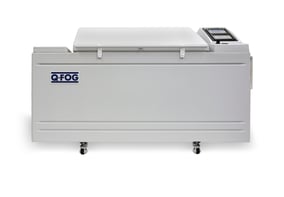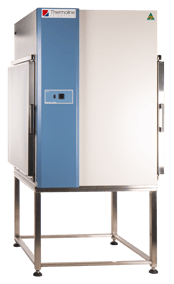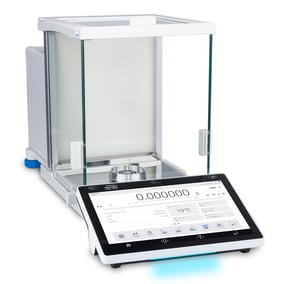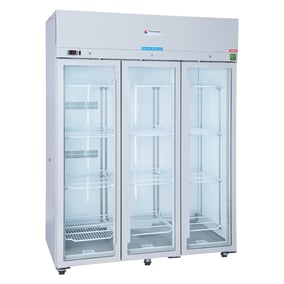
Thermoline refrigerators with glass doors may experience condensation buildup on the doors during high humidity conditions. There are ways to reduce this issue and keep your equipment free and clear from moisture build up.
How to Reduce Condensation on Glass Door Units
Condensation comes down to warm air versus cold air and the dew point, which is the condition at which air is too saturated to hold any more water.
When warmer, humid conditions meet a cooler surface — such as the inside of your commercial refrigeration glass doors — the excess water vapor turns into a liquid that forms condensation, in high humidity the exterior of glass doors can form condensation.
An example of this is a cold drink in a warmer room, the glass or can is much cooler than the room conditions therefore moisture forms on the glass/can.
Typically, when a room is too humid, there is a higher rate of condensation. This excess moisture not only blocks the view of your glass displays, but it can also lead to other issues in your establishment such as paint peeling, wood rotting and mould.
While wiping down the glass is a temporary fix, it doesn’t solve the source of the problem.
Preventive Measures
The first step in reducing condensation on commercial refrigeration units is to balance temperature humidity in your building or laboratory, if possible. By adjusting your room temperature to be slightly cooler you decrease the dew point as the air becomes cooler and drier. Another option is to install a dehumidifier to control air moisture. With less water circulating to cause over saturation, condensation is less likely to form.
Sometimes it is the unit itself that is the problem. Damaged door gaskets may be letting too much warm air into your refrigerator, if you experience excessive condensation buildup on the interior of your refrigerator without opening the doors this could be a possible cause. A technician can inspect your system for compromised areas.
Staying on top of commercial refrigeration maintenance will also help. The better your equipment works, the less trouble you’ll have keeping stable temperatures. In addition to equipment maintenance, check the rest of your building for areas where water may be getting in such as around doors and windows. Any excess moisture or leaks will contribute to a humidity problem.
Examples of Temperature, Humidity and chance of condensation forming. In this example the exterior of our glass door refrigerator has a surface temperature of 12°c which is the average temperature of a triple glazed glass door.
| Temperature | Humidity | Dew Point | Condensate Chance |
| 22°c | 50% | 11.1°c | Minimal |
| 23°c | 45% | 10.43°c | None |
| 23°c | 65% | 16.06°c | Excessive |
| 16°c | 65% | 9.42 | None |
As you can see, if you have no control over humidity, the only way to reduce the dew point is to reduce the room temperature.
The optimal conditions are 20-25°C and humidity 35-50% respectively.
Resources
Dew Point Calculator:






